The Milan Four: Jean Nouvel
Text by Simon Keane-Cowell
Zürich, Switzerland
19.04.11
In the first of four interviews from the 2011 Milan Salone Internazionale del Mobile with four very different figures from the creative world – an internationally celebrated architect, a grand master of Italian design, a strongly concept-led designer and a leading manufacturer – Architonic meets Jean Nouvel, Pritzker-Prize-winning architect of such projects as the Torre Agbar in Barcelona and Paris's Fondation Cartier, as well as designer of a growing body of highly considered furniture and lighting pieces.
'Objects and architecture are always witnesses of an epoch': architect Jean Nouvel at the Pallucco stand during this year's Salone del Mobile
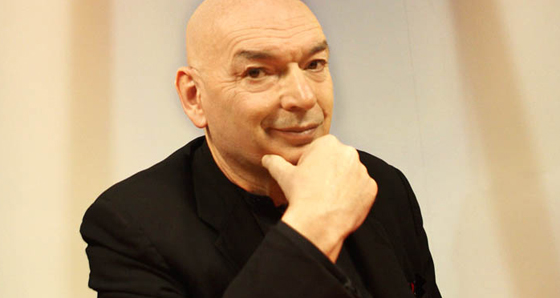
'Objects and architecture are always witnesses of an epoch': architect Jean Nouvel at the Pallucco stand during this year's Salone del Mobile
×And the award for the most star-like entrance at this year's Milan Furniture Fair goes to... Jean Nouvel.
Anyone who's visited this mother of all design events will know that fixed appointments are about as realistic as the colour of Silvio Berlusconi's hair. So vast and hectic is the Salone that rarely does anything start, or end, on time. If, indeed, it actually happens. So I wasn't too surprised on arriving at Italian manufacturer Pallucco's stand to find out that the internationally renowned French architect wasn't there yet. 'Mr Nouvel may be a while,' I was told.
When he did turn up, he arrived with an entourage and a camera man. (Naturellement.) Dressed in black, he wandered around the stand, accompanied by his assistant, casting what looked like a critical eye at the products on show. Centre stage was an installation of his new, strikingly sculptural 'Micro Telescopic' lamps, which, through their ability to be extended, engage directly with architectural space. A few small canapés and some water later, Nouvel (who turned out to be rather congenial) was ready and I sat down with him for what seemed like a very short ten minutes to discuss his new design, the specificity of creating objects as opposed to buildings, and why he hates to repeat himself.
Architect Jean Nouvel's strikingly sculptural new 'Micro Telescopic' lights for Pallucco, installed at the Italian manufacturer's stand at the 2011 Milan Furniture Fair
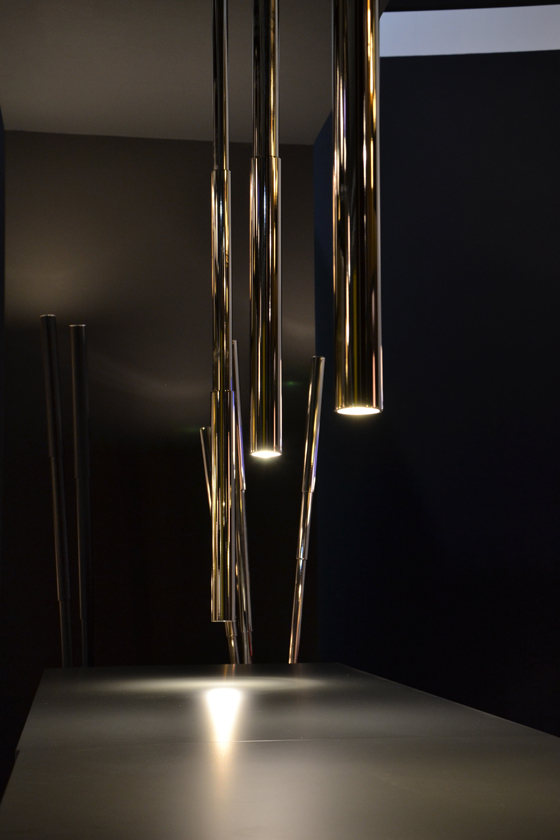
Architect Jean Nouvel's strikingly sculptural new 'Micro Telescopic' lights for Pallucco, installed at the Italian manufacturer's stand at the 2011 Milan Furniture Fair
×....
Why did you design these lights? How did the project come about?
When I design an object, generally it's the consequence of my life as an architect. I am not really a designer in the traditional way. I am design amateur because I do design at the same time as I do architecture. Very often I design the object simply because my client asks me to do so – to design a table, an armchair and so on. This project was about creating a symbol for a great French cognac brand. I wanted to create a very intense light, and to be able to adapt the light to the height of the space.
So I worked on this kind of telescope idea. I was surprised by how LED technology has evolved allowing a strong intensity of light in very small dimensions; that wasn't possible ten years ago. With just one spot, you can create a good ambience above a table, an intimate light, the way you can with a lampshade but in a much more concentrated way. And the object itself is much smaller. I like elementarity: the lamp as just one line where you can't seen the light source itself.
Adjustable in height, up to over two metres, the lights create a dialogue with the architectural space in which they are situated
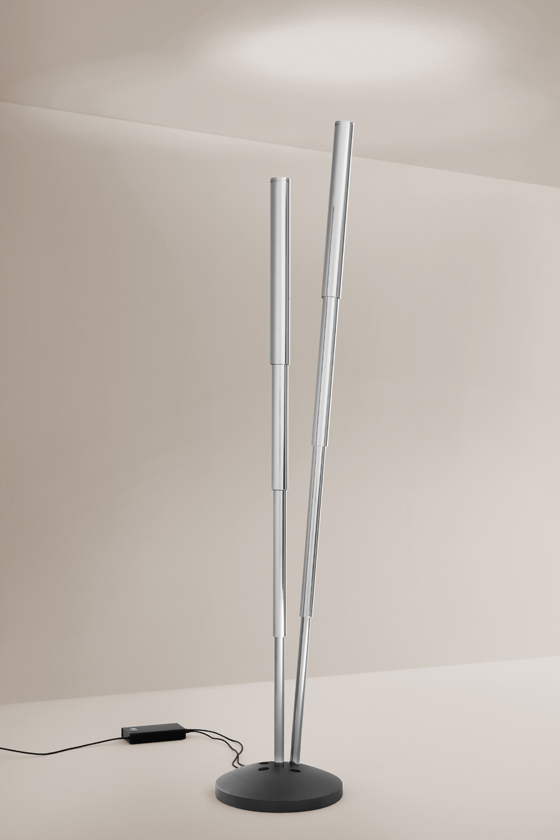
Adjustable in height, up to over two metres, the lights create a dialogue with the architectural space in which they are situated
×It's sometimes suggested that architects use product design to experiment architecturally, to explore concepts that are later applied to larger-scale architectural projects. Is that kind of dialogue between the two there in your work?
I don't think it's a dialogue. It's more the consequence of the situation. Creating an object is not the same as creating architecture. Objects and architecture are always witnesses of an epoch. But they are not the same thing. You know where a building it going to be placed. With an object you never know. So, the unique context is the epoch. And after this, the unique context is linked to people who buy the object. Because they like the object and put it in the middle of other objects. So it's like creating a building right in the city with a lot of different epochs. But the comparison stops here.
'I like elementarity: the lamp as just one line where you can't seen the light source itself,' says Nouvel
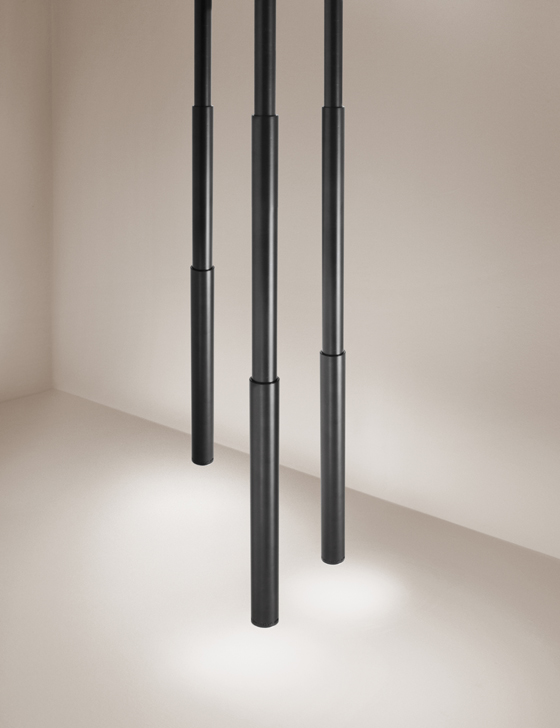
'I like elementarity: the lamp as just one line where you can't seen the light source itself,' says Nouvel
×But when you're designing a product, do you have an idealised architectural space in mind?
No. But sometimes I do design an object for my buildings or clients that is specific. It's not a criticism of earlier objects but I don't like quoting previous work. For example, when you do a space and you research an armchair, and you discover that this armchair is linked to the 1920s. People consider it a modern object, but, when you introduce it into your architectural project, the meaning changes because you know this object is a quotation from the early 20th century. You need sometimes to recreate an object because technology changes. Attitudes change also. And sometimes I redesign something because I don't find what I'm looking for.
'I always research the specific DNA of the object. My main concern is 'l'essence de l'objet'': shown here, a detail of Jean Nouvel's new 'Micro Telescopic' light for Pallucco
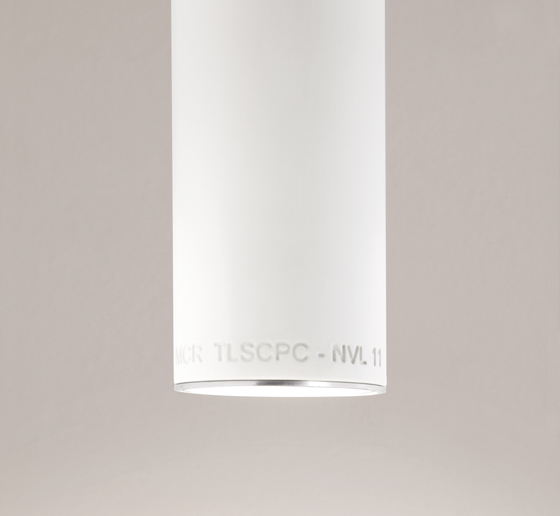
'I always research the specific DNA of the object. My main concern is 'l'essence de l'objet'': shown here, a detail of Jean Nouvel's new 'Micro Telescopic' light for Pallucco
×It's often said that, unlike many other architects, you don't have a particular, singular style. What do you think of architects who do have an indentifiable signature style, be it in terms of form or materials?
In architecture, I know why. In terms of psychoanalysis, I have no idea. With architecture, I try to answer the question directly. I have no reason to answer in the same way because the questions are not the same. That's my attitude. Every building needs roots. You cannot exchange a building with another one, between cities. That's the wrong idea. That is the main problem with architecture today. That's why I wrote the Louisiana Manifesto and so on. With objects, it's not the same thing, but you have no reason to use the same technique for a lamp, for a table, or always the same shape. I always research the specific DNA of the object. My main concern is 'l'essence de l'objet'. It's not about minimalism, but about the essence.
.....




